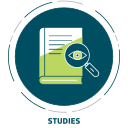IMPORTANT MESSAGE:
Dear visitors we are currently renewing the contents of the ELISE collection. Apologies for the inconveniences. You can contact us at eu-location@ec.europa.eu
Enabling Digital Government through Geospatial Data and Location Intelligence

What is ELISE and what is this action about?
What are its objectives and activities?
Check out ELISE contents
What are the benefits?
Join us and stay updated
What is ELISE and what is this action about?
Location information underpins policy assessment, digital services and applications for public administrations, businesses and citizens. However, interoperability barriers hinder the optimal performance of underlying ICT systems and obstruct economic value creation from location information.
To address this need, the European Location Interoperability Solutions for e-Government (ELISE) Action, is a package of legal/policy, organisational, semantic and technical interoperability solutions that aim to facilitate more efficient and effective digital cross-border or cross-sector interaction and data re-use in the domain of location information and services.
ELISE builds on top of the EULF and ARE3NA actions funded under the former ISA programme.
Get to know more on ELISE in the ISA2 official website.
What are its objectives and activities?
ELISE aims to break down barriers and promote a coherent and consistent approach to the sharing and reusing of location data across sectors and borders in the context of the digital transformation of public services.
This is done by providing location-related solutions for all levels of the European Interoperability Framework (EIF), through four main output types:

| 
| 
| 
|
Check out ELISE contents

| 
| 
| 
|
What are the benefits?
Benefits delivered through ELISE include:
- Cost and time savings by re-using cost-efficient solutions and avoiding duplicated or unnecessary effort, e.g. in data procurement, application development and service delivery.
- More effective and usable public digital services, through sharing best practices, fostering collaboration, and highlighting optimal business models, processes and technologies.
- Financial benefits for private sector companies in re-using public sector location data and participating in joint initiatives.
- Better support to the Policy Lifecycle and analysis through cohesive application of location information at the early policy stages.
- Improved spatial awareness and analytical skills for Organisation to make best use of available data.
Join us and stay updated
Become a member of the ELISE space by first registering in JoinUp to be updated on the latest contents of the collection. You will also have access to different benefits such as: proposing new content for the collection, interacting with other members, engaging in discussions, receiving notifications, and much more!
- Do not miss any ELISE news and ELISE events
Follow us on

Twitter at @EUlocation and

- Or reach to us at EU-LOCATION@ec.europa.eu
Subscribe to the ELISE

RSS feed ;
- Get ELISE contents through Turtle & RDF/XML

Report: 3rd Peer Learning Workshop on the use and impact of AI in public services, 24th June 2021

Paper: A data-driven method for unsupervised electricity consumption characterisation at the district level and beyond

Report: Location interoperability, innovation and digital transformation

Report: Study on Opportunities and Challenges of Collaboration for Geospatial Services

Design sucessful workshops with the new Workshop Pack!

Presentation: Data-driven methodology for electricity characterisation of districts

Presentation: 3D City Models to Predict Energy Heat Demand

Report: EPC4EU - Harmonisation of datasets of Energy Performance Certificates of buildings across Europe

Report: Data-driven method for unsupervised electricity consumption characterisation at district level and beyond




